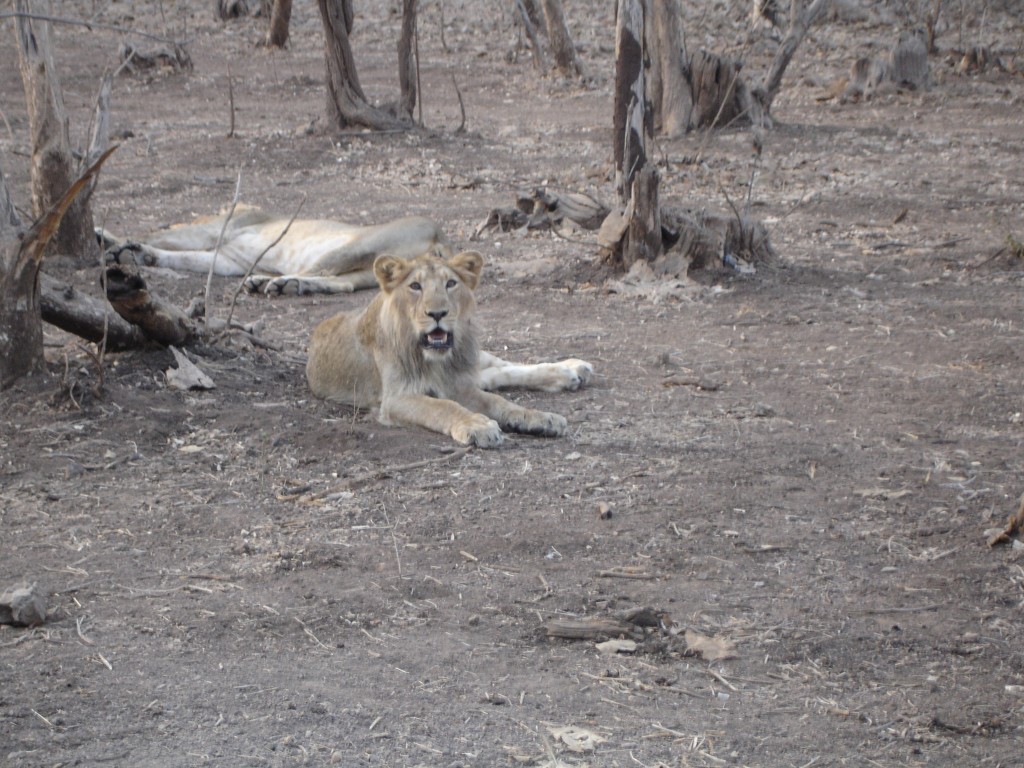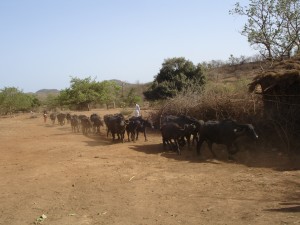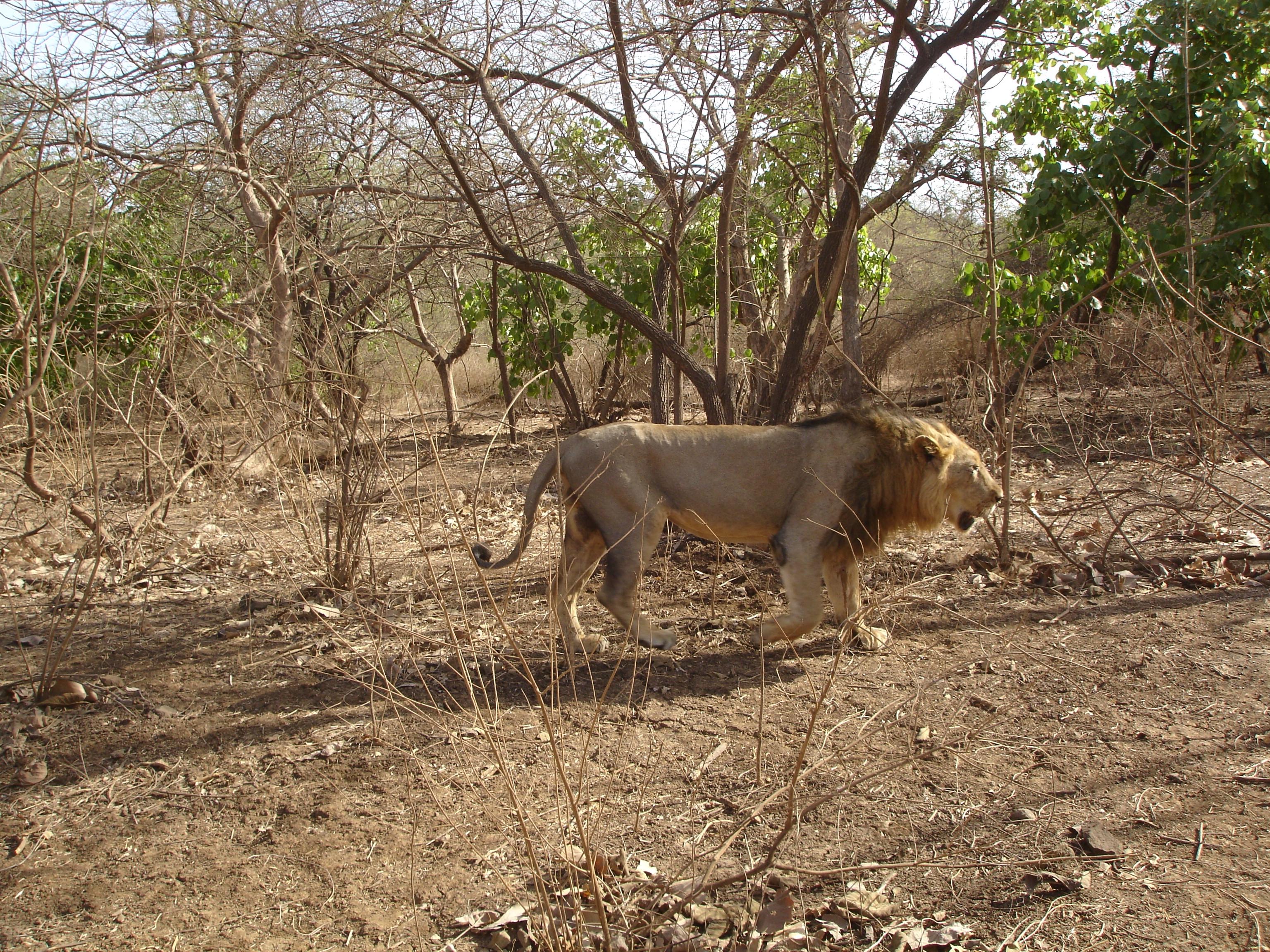
Settlers, poachers and hunters had almost claimed this species when the Nawabs of Junagadh and the British administration stepped in and stopped the indiscriminate killing of Lions. The 19th century witnessed large scale exterminations. The more adaptable and gregarious nature of the lion made it more vulnerable to poaching and hunting. Loss of habitat was also significant. Since tigers were more opportunistic they gradually invaded lion country.

Easily available cattle replaced the natural prey species which were reducing because of the pressures of hunting and habitat degradation. Revengeful killing of Lions became common.
Moving from place to place within the forests, the Maldharis caused deforestation and land degradation due to grazing and meeting requirements of fuel and building material. Fertile top soil was also removed from the forest floor and used in agricultural fields. Grass production came down and the ungulate population was adversely affected.
It was then decided to declare a part of the park as a National Park and free it of Maldharis and cattle gradually to facilitate an easy shift. A number of families were relocated. With the population of cattle coming down the natural prey base picked up considerably.
The spotted deer is the most beautiful of all deer. The pairing season is at its height in May. They are prolific breeders. New fawns can be born at intervals of six months. The stags roam widely from herd to herd in search of does in heat. No territory is established. The bony antlers of the deer are a means of defense against predators and for use when stags fight for the possession of females. This is a trial of strength match to establish superiority and rarely fatal. The deer is very protective of its antlers.
Today lions exist in the wild only in Africa and India as separate subspecies. Slightly smaller than the tiger, the lion is the second biggest of all living cats on earth and the only where the sexes look different.
Only males have manes. The Asiatic lion is smaller but higher than the African. It has a scantier mane but a more shaggy and dense coat which camouflages the animal well in its surroundings.
The Asian and African species have been cross bred earlier .Off springs were not healthy. Tigers and Lions have cross bred to produce healthy Ligers or Tiglons
Asiatic males have long beard lie manes which begin to grow from the age of two and reach full growth by five, the color darkening with age. The less dense manes of the Asian lion is an evolutionary response to the warm, low altitude thorny environment at Gir. African lions live at cold higher altitudes. Luxuriant maned lions were hunted more and the reduction of mane density could also have been an evolutionary survival response.
The hunting of animals requires a high degree of intelligence. Hearing, vision and perception of scent are highly developed in carnivores.
The whiskers are sensory and tactile. Facial markings help in identifying and counting lions. The vibrissae at the root of the whiskers are unique.
Amongst the big cats, tail tufts are only found in the lions. The deeply cushioned pads under the feet help in its stealthy, noiseless movements. Pug marks also help in counting lions.
The lion plays an important role in procreation and protection of territories which may range up to 200 sq. kms. Territories of females are smaller and may extend up to 80 sq. kms. The Lion marks its territories by squirting urine backwards.
The urine of the lioness also contains pheromones which assist the lion to assess the fertility and reproductive status of a lioness.
All lions in Gir are descendants of the once surviving 12 lions of the area. Inbreeding has caused a weakening of the gene pool.
The female achieves sexual maturity at the age of three and the male between five to eight years. Both remain sexually active till the age of fifteen years. The mating pair generally gets isolated to concentrate on courtship. In Indian Lions mating can take place throughout the year and lasts for a couple of days. Because of a weak gene pool the frequency of copulation is higher than in the African. The Lions at Gir have the poorest quality of sperms.
The pair during cohabitation, does not like intrusion and avoids killing of prey. They would also not accept baits. Unprovoked attacks on humans during this period are not uncommon.
